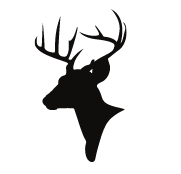What is a Male Deer Called? A Clear and Knowledgeable Answer
Male deer are a common sight in many parts of the world. They are known for their majestic antlers and graceful movements. However, not everyone is familiar with the correct term for a male deer. In this article, we will answer the question: what is a male deer called?
The answer to this question is simple: a male deer is called a “buck”. This term is used to refer to male deer of all species, including white-tailed deer, mule deer, elk, and moose. Bucks are easily recognizable by their antlers, which they use to attract mates and establish dominance over other males.
While the term “buck” is widely used and recognized, there are some regional variations. For example, in some parts of the United States, male deer are referred to as “stags”. In the UK, “stag” is typically used to refer to a male red deer specifically. Despite these variations, “buck” remains the most common and widely recognized term for a male deer.
Terminology
Male deer are commonly referred to as bucks. This term is used to describe both adult and young male deer. However, there are other terms used to describe male deer in different stages of their life.
Adult Male Deer
An adult male deer is usually fully grown and has reached sexual maturity. They are also known as “stag” or “hart”. The term “stag” is commonly used to describe a male deer that is more than five years old. On the other hand, the term “hart” is used to describe a male deer that is more than one year old.
Young Male Deer
Young male deer are commonly referred to as “spike” or “button” bucks. This term is used to describe male deer that are less than one year old. They are characterized by small antlers that have not yet developed fully.
It is important to note that the terminology used to describe male deer may vary depending on the region or country. However, the terms mentioned above are widely used and recognized in the English language.
In summary, male deer are commonly known as bucks. However, there are other terms used to describe male deer in different stages of their life such as stag, hart, spike, and button bucks.
Species and Antler Size
White-Tailed Deer
The white-tailed deer is a medium-sized deer that is found throughout most of North America. The antlers of a mature white-tailed deer can grow up to 24 inches in length, with a spread of up to 30 inches. The antlers of a male white-tailed deer are typically larger than those of a female.
Mule Deer
The mule deer is a larger deer that is found in the western United States. The antlers of a mature mule deer can grow up to 28 inches in length, with a spread of up to 36 inches. The antlers of a male mule deer are typically larger than those of a female.
Elk
The elk is one of the largest species of deer and is found in North America and Eurasia. The antlers of a mature elk can grow up to 4 feet in length, with a spread of up to 5 feet. The antlers of a male elk are typically larger than those of a female.
Moose
The moose is the largest species of deer and is found in North America and Eurasia. The antlers of a mature moose can grow up to 6 feet in length, with a spread of up to 6 feet. The antlers of a male moose are typically larger than those of a female.
Overall, the size of a male deer’s antlers depends on the species and the age of the deer. While antlers can vary in size and shape, they are an important characteristic of male deer and are used for a variety of purposes, including attracting mates and establishing dominance.
Behavior and Mating
Rutting Season
Male deer, also known as bucks, are known for their aggressive behavior during the mating season, which is commonly referred to as the rutting season. During this period, bucks will compete with each other for the chance to mate with female deer, or does.
Bucks will display their dominance by engaging in physical confrontations with other males, such as locking antlers and pushing against each other. They will also make loud vocalizations, such as grunts and roars, to attract females and intimidate other males.
Antler Shedding
One unique behavior of male deer is the shedding of their antlers. Antlers are bony structures that grow out of the skull and are used by bucks to compete with each other during the rutting season.
After the mating season is over, bucks will shed their antlers and grow new ones in preparation for the next rutting season. This process typically occurs in the winter months, and the new antlers will grow larger and more elaborate each year as the buck matures.
Overall, the behavior and mating habits of male deer are fascinating to observe and study. Their aggressive behavior during the rutting season and the shedding of their antlers are just a few of the unique characteristics that make them such interesting animals.
